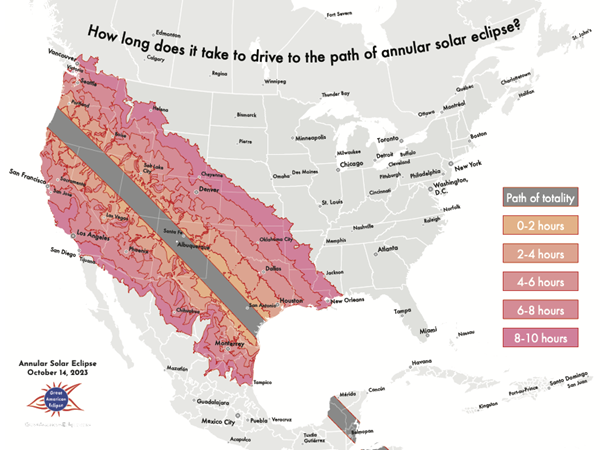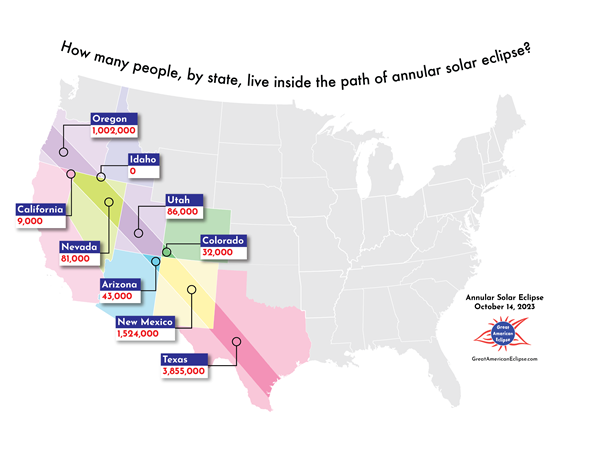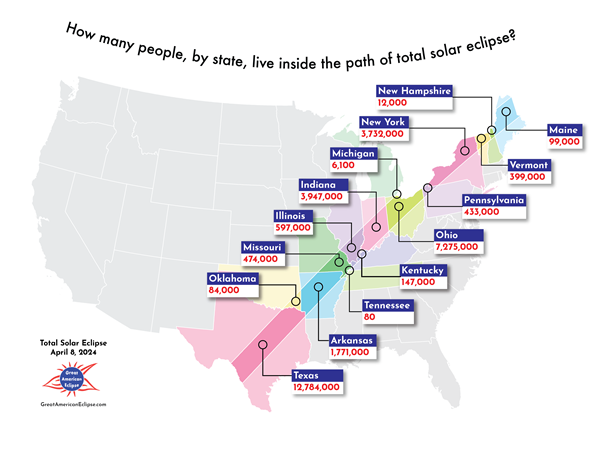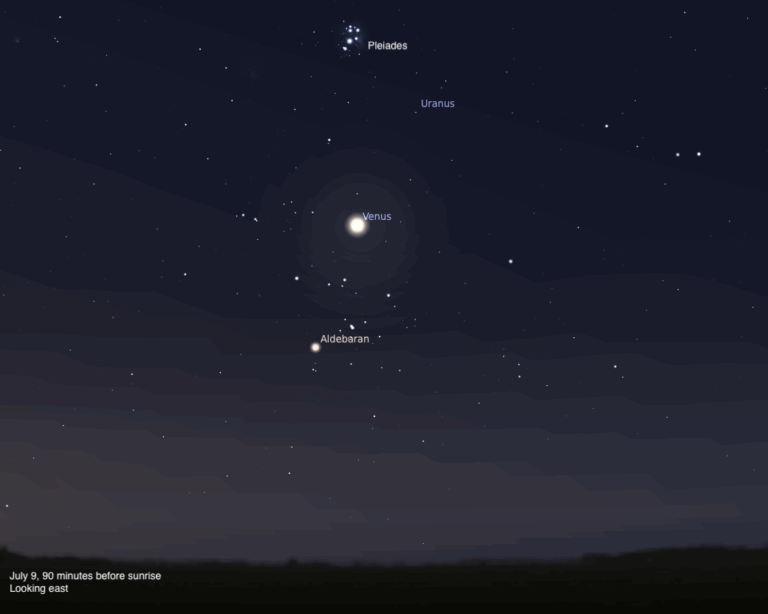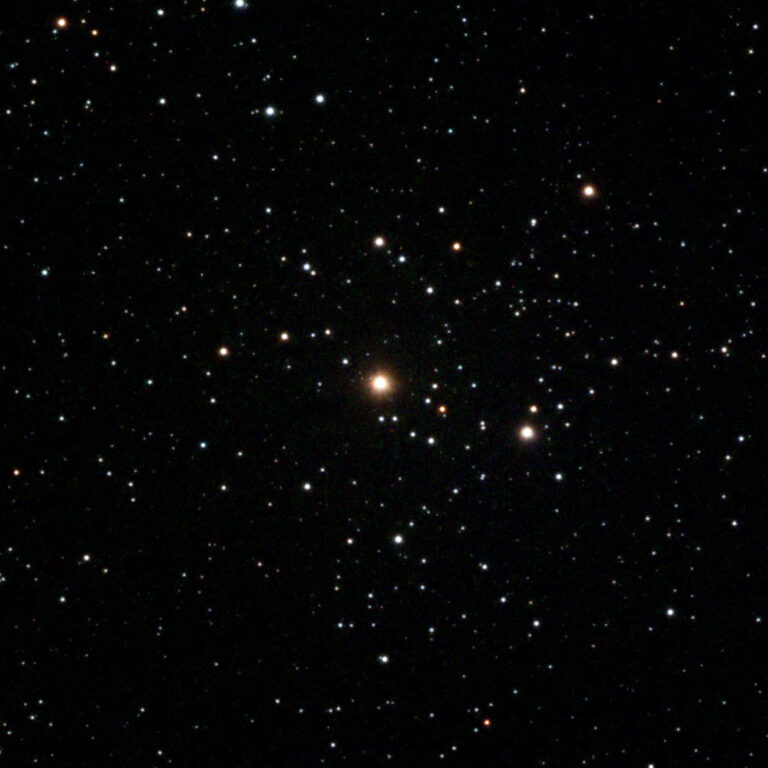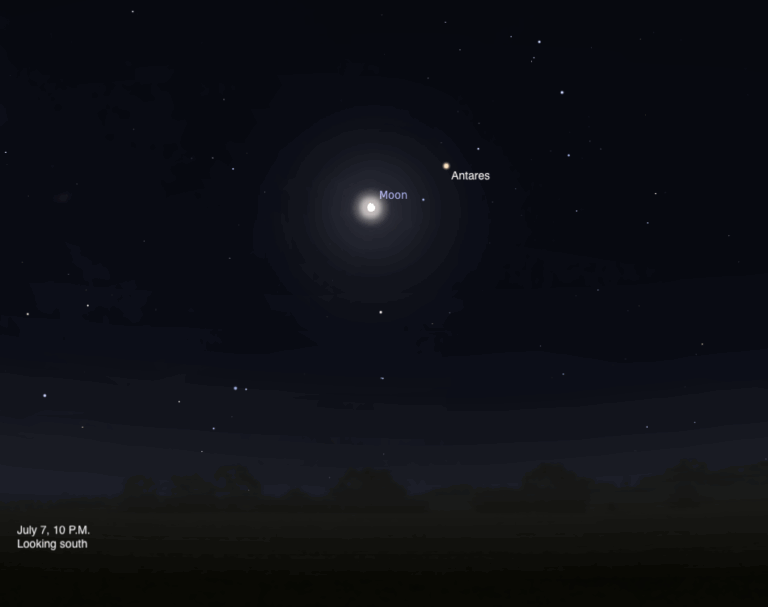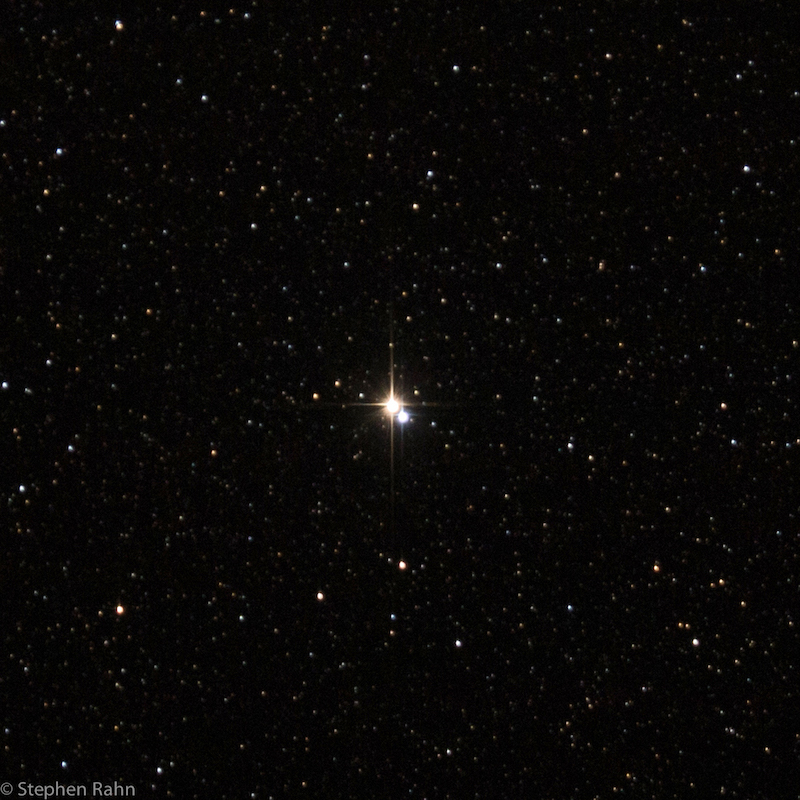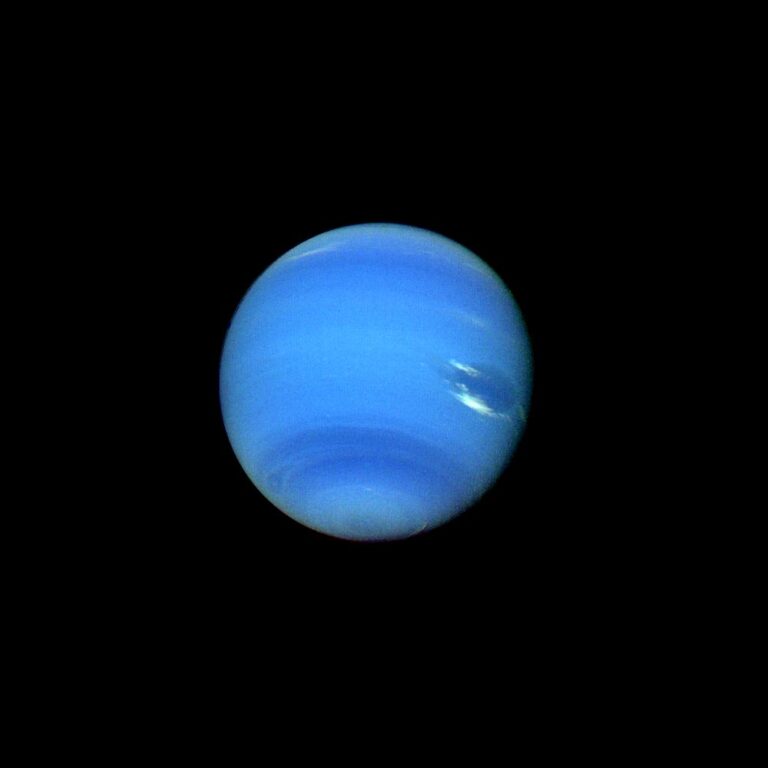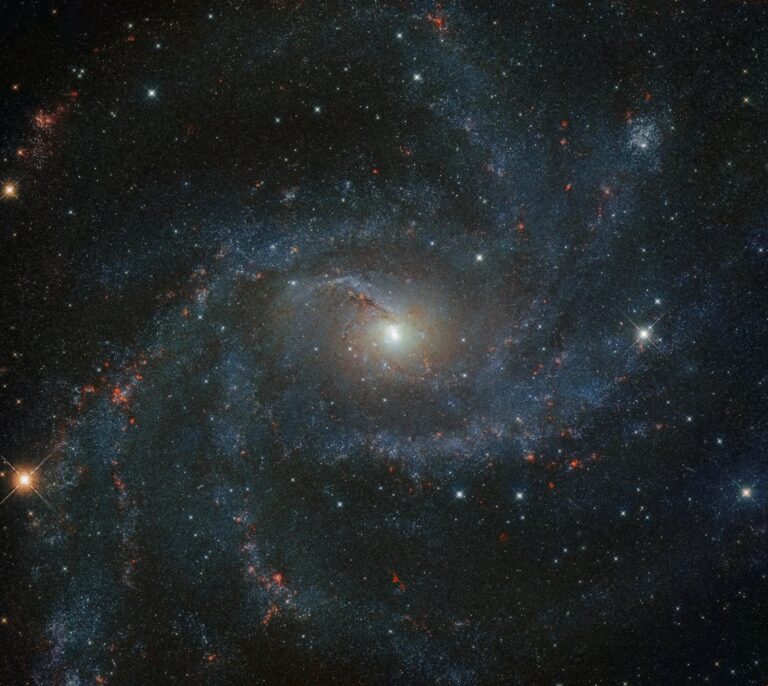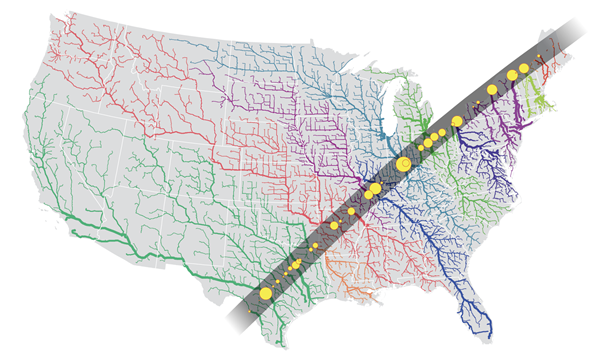
Key Takeaways:
In the next 12 months, an annular and then a total solar eclipse will cross the U.S. Here’s where to see them.
North America will experience two spectacular solar eclipses within a six-month span from Oct. 14, 2023, to April 8, 2024. The first is an annular eclipse whose central path treks across the western U.S. from Oregon to Texas before crossing Central America and northern South America. The second is a total solar eclipse making initial landfall near Mazatlán, Mexico, before sweeping the continent all the way to Newfoundland, Canada. Both are set to once again expose millions to the wonder of eclipses.
These eclipses will also impact our road network, hospitality industry, local medical and police resources, markets and restaurants, and almost every facet of local economies. If you remember the 2017 event, you know how hectic things can get before and after eclipses, so if you haven’t already started, begin your planning now!
Annular versus total
Let’s look at precisely how these upcoming spectacles measure up. During the peak of the annular solar eclipse on Oct. 14, 2023, the Sun will never be completely covered, but will instead appear as a brilliant ring in the sky. The Moon’s orbit is slightly elliptical; because our satellite will be near the far end of that orbit in early October, it will appear a bit smaller in diameter than the Sun.
At all times during an annular solar eclipse, you must use solar filters built to the ISO 12312-2 international standard. You can still delight in Baily’s beads (the small bits of exposed Sun along the Moon’s rough profile), the otherworldly view of the Sun as a perfect ring, the eerie daytime lighting during deep eclipse, and the curved shadow of the Sun projected onto the ground from gaps between tree leaves.
While an annular solar eclipse has its charms, it is merely the opening act for the main attraction: the long-duration total eclipse of the Sun on April 8, 2024. Just 177 days after the 2023 annular eclipse, Mexico, the U.S., and Canada will be split by the 122-mile-wide (197 kilometers) path of a total solar eclipse.
Unlike an annular eclipse, you can safely view totality with your naked eye — but only once the Sun has completely moved behind the Moon. During the rest of the event, you must use the same ISO standard 12312-2 solar filter to observe safely.
The 2024 eclipse promises a maximum totality of 4 minutes 28 seconds. During this time, you’ll be able to see diamond rings, Baily’s beads, the Sun’s corona, a 360° sunset, and even a few stars and planets.
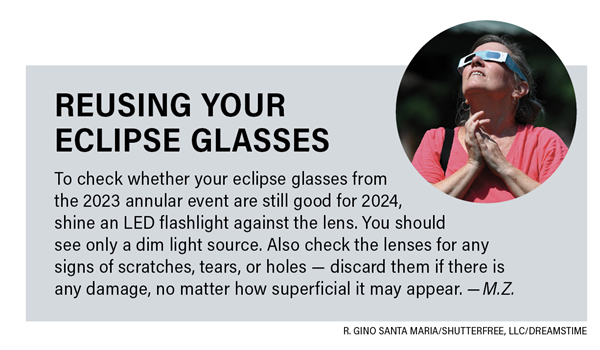
Heightened interest
The 2017 eclipse left a dramatic impression on millions of Americans, so we can expect high public and media interest in the 2024 eclipse. And this one will be even bigger and better! Consider:
• The 2024 eclipse is nearly twice as long in duration of totality as the 2017 eclipse.
• A total of 31.6 million people in the U.S. already live within the path of totality of the 2024 event. (Only 12 million people lived inside the path of the 2017 eclipse.)
• Major eastern seaboard metropolitan areas such as Washington, D.C., Baltimore, Philadelphia, New York, and Boston are about 200 miles (320 km) from the path of totality, making a short eclipse trip possible for many more millions of people.

How many people live inside the eclipse paths?
A total of 6.6 million people live inside the path of the annular solar eclipse of 2023. The three states with the largest population inside the path of the annular solar eclipse are Texas, New Mexico, and Oregon, including the metropolitan areas of San Antonio and Albuquerque. The path also crosses lightly populated areas of California, Nevada, Utah, Arizona, and Colorado, plus a small corner of Idaho.
A total of 31.6 million people in the U.S. live inside the path of totality in 2024. The biggest metropolitan areas are Dallas, San Antonio, Austin, Indianapolis, and Cleveland, and the states with the highest number of residents inside the path are Texas, Ohio, Indiana, and New York.
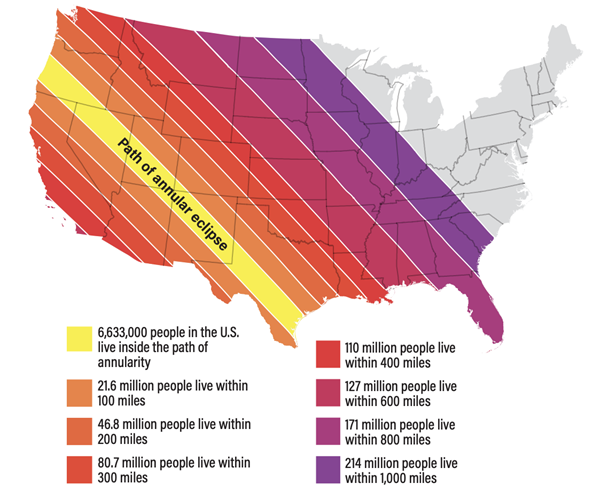
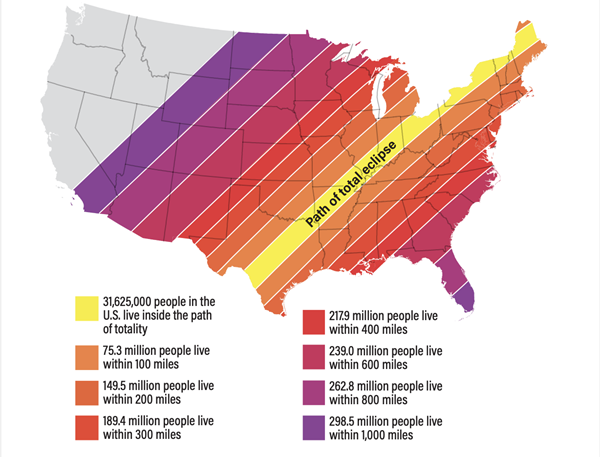
Getting to totality
In addition to people living in the path of the eclipses, many others will travel to stand under the Moon’s shadow. The path of the 2024 eclipse comes near the densely populated metropolitan areas of the American Northeast, the Great Lakes, and Texas. In fact, about half the U.S. population lives within about 250 miles (400 km) of the path of totality! That means half the American population can make an overnight trip to see the eclipse.
On the map below, the shaded areas around the path of totality indicate drive times in two-hour increments. Bear in mind that this map shows how many hours it will take to drive from your location to the path of the eclipse on a normal day. You can generally expect busy but uncongested traffic on the day before or early morning of an eclipse, followed by a sudden traffic jam on the closest highways and freeways the moment the show is over. If you can, plan to spend eclipse night at or near your viewing location.
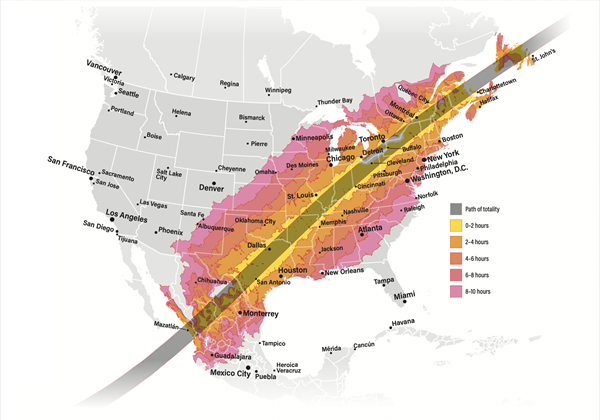
How many visitors should each state expect?
Many eclipse experts predict that eclipse day will be perhaps the largest national gathering in the history of the U.S. Can’t quite believe it? Let’s look at the numbers.

I developed an eclipse visitation distance-decay model that starts with the simple and obvious observation that the closer someone is to the path of totality, the more likely they are to go see the eclipse. I used this model to predict travel patterns for the 2017 eclipse and it proved broadly correct (though Wyoming far exceeded my prediction).
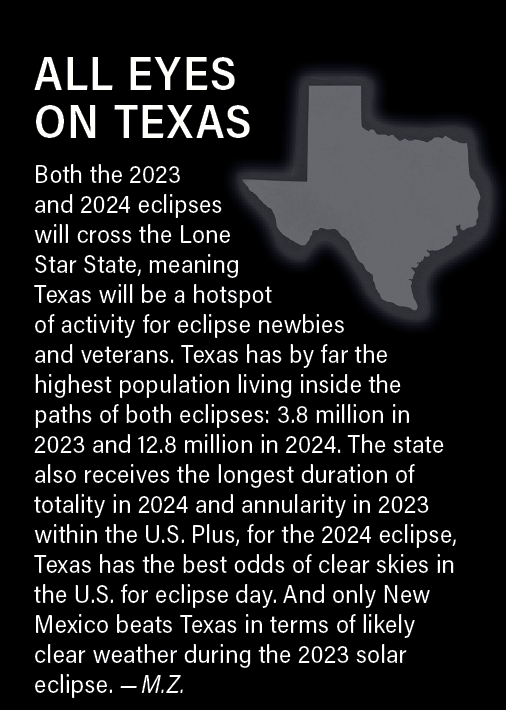
For the 2024 total solar eclipse, I estimate 923,000 to 2,077,000 people will travel to the path of totality. Of these, Texas gets a plurality of 180,000 to 720,000 visitors, followed by Indiana, Ohio, and New York. What is remarkable about the path of totality is the proximity to the major metropolitan areas of the northeastern U.S. Philadelphia, Baltimore, New York, Washington, D.C., and Boston are only about 200 miles (322 km) from the path. Indeed, more than half the U.S. population is within 250 miles (400 km) of the path of totality! And these estimates exclude people already living in the eclipse path, so add about 31.6 million people for the 2024 total solar eclipse.
The impacts of the eclipses
The streams of visitors to view the 2023 and 2024 eclipses will impact many communities around the country. But the greatest impact will be the immeasurable beauty of viewing the Sun in a whole new way.
The Sun is a giant, dynamic magnet and the coronal swirls, loops, and streamers visible only during a total solar eclipse reveal the imprint of its intense magnetic fields. It is this fleeting glimpse of our star that makes total solar eclipses so special to all who see them, and worth traveling hundreds of miles to see.
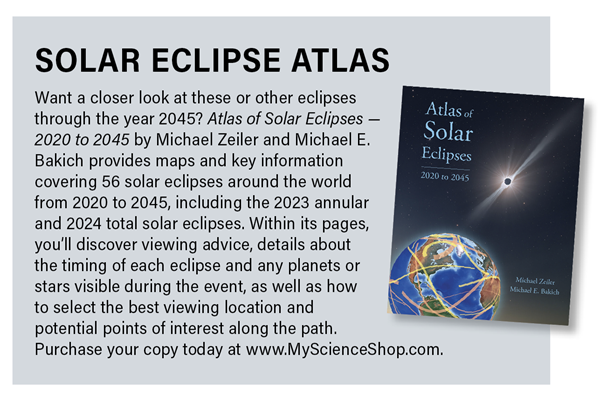
Web Extra: More eclipse maps
Below, you’ll find additional maps not included in the print version of this story, as well as high-resolution PDF downloads of each map. All maps were created by Michael Zeiler of greatamericaneclipse.com; you can find even more details about these eclipses on greatamericaneclipse.com.
